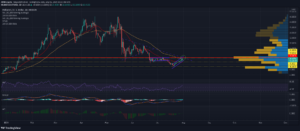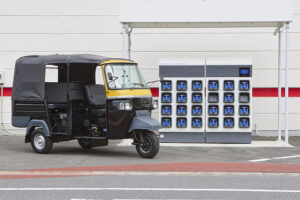Powered by price increases.
By Wolf Richter for WOLF STREET.
Total retail sales – not adjusted for inflation, now a big factor – inched up 0.7% in August from July, to $619 billion (seasonally adjusted), up a stunning 18% from two years ago and 15.1% from a year ago. The insert in the chart shows that this wasn’t a proper “rebound,” as it has been widely called in the media today, but an uptick in a four-month down-trend from the mind-blowing superlative historic free-money blow-off spike in April. August retail sales were down 1.6% from that April stimmie-craziness:

A spike doesn’t spike forever. But Americans are still making a heroic effort to spend the pile of free money they got … the last two stimmies totaling $2,000 per person, the $800 billion in forgivable PPP loans that just about everyone with a little or big business got, extra unemployment benefits, massive gains on asset prices, all of it fueled by the Fed’s $4-trillion money-printing binge and the government’s $5-trillion deficit-spending binge in 18 months, which created the most monstrously overstimulated economy and markets ever.
New & used auto dealers and parts stores: Sales dropped another 3.6% in August from July, to $121 billion (seasonally adjusted), fourth month in a row of large declines off the free-money spike in March and April.
There is plenty of demand, and prices have surged amid inventory shortages of used vehicles and historic inventory shortages of new vehicles. Customers face dealer lots that are nearly empty and out of popular models amid rotating shutdowns of assembly plants globally due to the semiconductor shortages.
But these $121 billion in sales in August were still up 10.7% from a year ago and 22.2% from two years ago, in dollar terms, thanks to massive price increases – 32% year-over-year for used vehicles and 7.6% for new vehicles, according to the Consumer Price Index.

The sales decline shows in unit sales, not dollar sales: New-vehicle sales in August dropped for the fourth month in a row to 1.28 million vehicles, down 20% from March when there was still enough inventory to sell. The Seasonally Adjusted Annual Rate (SAAR) of sales, a standard industry measure, plunged to the lowest, beyond the lockdowns, since September 2011:

The overview. Auto dealers and parts stores are by far the largest retail segment, with a share in normal times of around 21% of total retail sales (black line in the chart below). Nonstore retailers, which is mostly ecommerce, have become the second retail category (red line), having surpassed Grocery and beverage stores (green line) and restaurants and bars (purple line) in 2019. They’re followed by general merchandise stores, building material and garden supply stores, and the rest:

Ecommerce and other “nonstore retailers”: Sales jumped 5.3% in August from July, to $88 billion, seasonally adjusted, up 7.5% from the spike last year, and up 25% from August 2019. Nonstore retailers include ecommerce sales by any retailer, from online-only retailers to the online operations of brick-and-mortar retailers. It also includes sales by mail-order houses, street stalls, vending machines, etc.

Food and Beverage Stores: sales jumped 1.8% for the month amid, to $76 billion, up 5.7% year-over-year and up 15% from two years ago, fueled in part by rising prices, and in part by the pandemic shift to working from home or not working at all, which shifted some sales from commercial buildings and lunch places to supermarkets.

Restaurants & Bars: Sales remained flat for the month, at $72 billion, matching the record set in July. Year-over-year, sales jumped by 32% and compared to two years ago, by 11%. But the combination of widespread price increases (0.4% for the month, according to CPI) and flat sales indicate that the phenomenon of “revenge spending” is starting to lose a wee bit of steam:

General merchandise stores: Sales jumped 3.7% for the month to $58 billion, the second highest ever behind the stimmie-spike of March 2021. Up 13.1% year-over-year and up 16% from two years ago. Sales at brick-and-mortar stores of Walmart and Costco are in this category, but their ecommerce sales are not.

Building materials, garden supply and equipment stores: Sales rose 0.9% for the month, to $39 billion, after four months of declines, as the sudden passion for DIY is beginning to fade. Sales were up by 6.3% year-over-year and by a still astonishing 22% from two years ago:

Gas stations: Sales ticked up 0.2% for the month, eking out a new all-time high of $49.4 billion – just above July 2008 ($47 billion) and February 2013 ($49 billion). Up 17% year-over-year, and up 36% over two years. Sales have been powered by gas prices that jumped 2.8% for the month and 43% year-over-year. Sales at gas stations also include sodas, junk food, beer, motor oil, etc.:

Clothing and accessory stores: Sales edged up 0.1% for the month, to $26 billion, up 39% from the collapsed levels a year ago, and up 15% from two years ago:

Miscellaneous store retailers, which include cannabis stores: Sales rose 1.4% for the month to a record of $14 billion, up 19% from a year ago and up 23% from two years ago. These specialty stores are focused on one category of product, such as art supplies, beer making supplies, wine making supplies, binoculars, etc., and include the booming sales of legal cannabis stores:

Furniture and home furnishing stores: Sales jumped 3.7% for the month, to $12 billion, up 16% from a year ago and up 22% from two years ago:

Department stores: sales rose 2.4% for the month, to $12 billion, up 29% from the collapsed levels a year ago, and up 6% from two years ago. This does not include their ecommerce sales:

Sporting goods, hobby, book and music stores: Sales fell 2.7% for the month, to $9 billion, the fifth month in a row of declines, as the fabulous stimmie-spike in March is unwinding slowly. Sales are up 10% year-over-year and 38% from two years ago:

Electronics and appliance stores: Sales fell 3.1% for the month to $8.3 billion, up 18% year-over-year and up 3% from two years ago.
Electronics and appliances are a big business, but specialized electronics and appliance stores handle only a small part of it. Much of it has shifted to ecommerce. And a big portion has always been sold at other types of stores, such as Sears (RIP), Costco, Walmart, and Home Depot, which are in other categories of retailers. This category here is limited to the brick-and-mortar stores of electronics and appliance retailers, such as Best Buy:

Enjoy reading WOLF STREET and want to support it? Using ad blockers – I totally get why – but want to support the site? You can donate. I appreciate it immensely. Click on the beer and iced-tea mug to find out how:
Would you like to be notified via email when WOLF STREET publishes a new article? Sign up here.
![]()
Many experts agree that metal roofs are a great defense against wildfires. Click here or call 1-800-543-8938 for details from our sponsor, the Classic Metal Roofing folks.
Classic Metal Roofing Systems, the leader in fire safe roofing for residential applications, manufactures products that are 1/20 the weight of most tile products and eligible for Class A, B, or C fire ratings as determined by roof preparation.
- &
- 000
- 100
- 2019
- 2021
- 7
- accessory
- Ad
- All
- Americans
- April
- around
- Art
- article
- asset
- AUGUST
- auto
- bars
- beer
- BEST
- BEVERAGE
- Billion
- Bit
- Black
- Building
- business
- buy
- call
- cannabis
- commercial
- consumer
- Customers
- Defense
- Demand
- Diy
- Dollar
- dropped
- ecommerce
- economy
- Electronics
- equipment
- etc
- experts
- Face
- Fire
- food
- Free
- GAS
- General
- goods
- great
- Green
- grocery
- here
- High
- Home
- houses
- How
- HTTPS
- index
- industry
- inventory
- IT
- July
- large
- Legal
- Limited
- Line
- Loans
- lockdowns
- Machines
- Making
- March
- Markets
- materials
- measure
- Media
- metal
- million
- money
- months
- Music
- Oil
- online
- Operations
- Other
- pandemic
- plants
- Plenty
- Popular
- PPP
- price
- Product
- Products
- ratings
- Reading
- REST
- Restaurants
- retail
- retailer
- retailers
- safe
- sales
- sell
- semiconductor
- set
- Share
- shift
- shortages
- small
- sold
- spend
- sponsor
- Steam
- store
- stores
- street
- supply
- support
- Systems
- unemployment
- Vehicles
- vending machines
- Walmart
- WINE
- working from home
- year
- years





